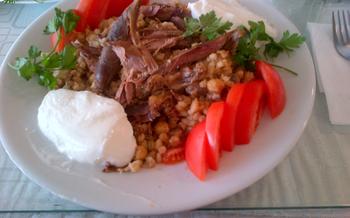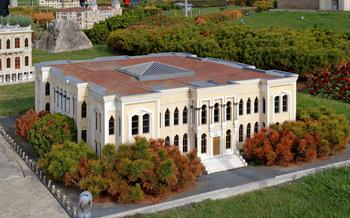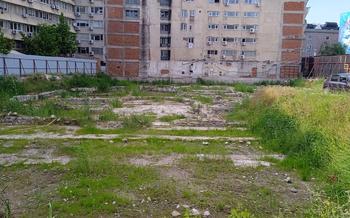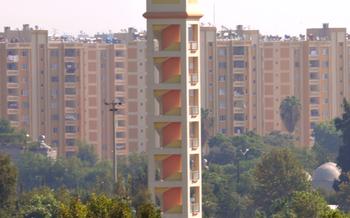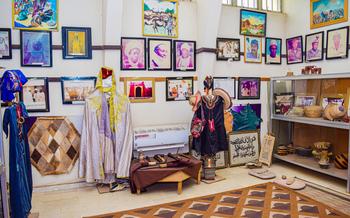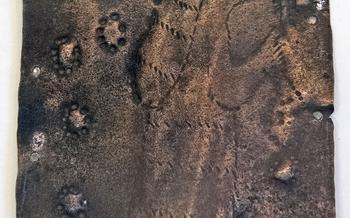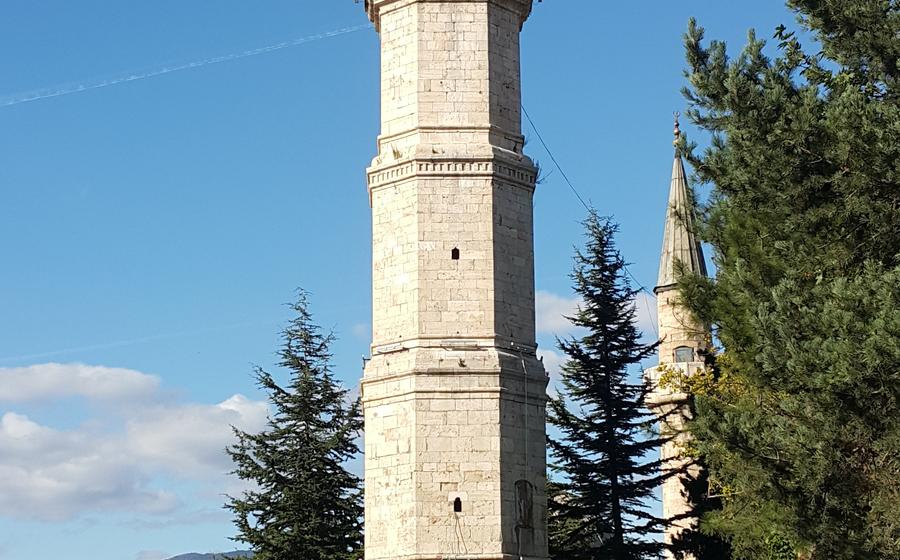
Saat Kulesi (Clock Tower)
- Saat Kulesi (Clock Tower): A Timeless Landmark in Tokat
- Location and Accessibility: Finding Your Way to the Clock Tower
- Historical Significance: A Journey Through Time
- Architectural Marvel: Exploring the Details
- Cultural Symbol: A Reflection of Tokat's Heritage
- Panoramic Views: Unveiling Tokat's Beauty
- Timekeeping Precision: A Symbol of Punctuality
- Local Legends and Folklore: Stories Woven Around the Clock Tower
- Restoration and Preservation: Protecting a Timeless Treasure
- Guided Tours: Unveiling Hidden Secrets
- Best Time to Visit: Capturing the Clock Tower's Essence
- Nearby Attractions: Exploring Tokat's Treasures
- Photography Tips: Capturing the Saat Kulesi's Grandeur
- Visiting Etiquette: Respecting Local Customs
- Insider Tip: Unveiling a Hidden Gem
Saat Kulesi (Clock Tower): A Timeless Landmark in Tokat
In the heart of Tokat, a city steeped in history and culture, stands a majestic symbol of time - the Saat Kulesi, or Clock Tower. This iconic landmark has witnessed the passage of centuries, serving as a steadfast guardian of Tokat's rich heritage.
The Saat Kulesi was meticulously crafted during the Ottoman Empire, a testament to the architectural prowess of that era. Its intricate design and imposing structure have earned it a place among Tokat's most cherished landmarks. The clock tower stands tall, adorned with elegant details, its presence commanding respect and admiration.
Beyond its aesthetic appeal, the Saat Kulesi holds immense cultural and social significance for the people of Tokat. It serves as a reminder of the city's glorious past and a symbol of its enduring spirit. Locals gather around the clock tower to celebrate festivals, mark special occasions, and share stories that have been woven into the fabric of Tokat's identity.
Location and Accessibility: Finding Your Way to the Clock Tower
The Saat Kulesi stands tall and proud in the heart of Tokat, a city steeped in history and culture. To reach this iconic landmark, head to Cumhuriyet Meydanı, the central square that serves as the vibrant hub of Tokat. The clock tower's exact address is Cumhuriyet Meydanı, 60200 Tokat Merkez/Tokat, making it easily accessible on foot or by vehicle.
If you're exploring Tokat on public transportation, hop on any bus or minibus that passes through Cumhuriyet Meydanı. Alternatively, taxis are readily available and can drop you right at the foot of the clock tower. For those arriving by private vehicle, there are ample parking spaces in the vicinity, ensuring a hassle-free visit.
As you approach the Saat Kulesi, take a moment to admire its commanding presence amidst the bustling city life. Its towering structure and intricate details are sure to captivate your attention, inviting you to delve deeper into the history and significance of this remarkable landmark.
Historical Significance: A Journey Through Time
The Saat Kulesi has stood witness to the rich tapestry of Tokat's history, serving as a silent observer of the city's evolution. During the Ottoman Empire, it played a crucial role as a timekeeping landmark, guiding the daily lives of the populace. The clock tower's chimes echoed through the streets, signaling the start of the day, prayer times, and the end of the workday.
Over the centuries, the Saat Kulesi has been associated with numerous historical events and stories that have shaped Tokat's identity. According to local lore, the clock tower once served as a watchtower, alerting the city's inhabitants to approaching threats. It is also believed to have been used as a meeting point for secret societies and revolutionaries during the Ottoman era.
The Saat Kulesi's historical significance extends beyond its role as a timekeeping device. It is intricately connected to other historical sites in Tokat, forming a narrative of the city's past. The nearby Tokat Castle, with its imposing walls and towers, was once the seat of power for the Ottoman governors. The Ulu Mosque, with its elegant architecture and serene atmosphere, has been a place of worship for centuries. Together, these landmarks tell the story of Tokat's rich history, with the Saat Kulesi serving as a poignant reminder of the city's enduring spirit.
Architectural Marvel: Exploring the Details
The Saat Kulesi stands as a testament to the architectural prowess of the Ottoman Empire. Its intricate design and harmonious proportions showcase the skill and artistry of the era's master builders. The clock tower is constructed from finely cut stone, each block carefully placed to create a sturdy and enduring structure. Its base is adorned with a series of arched openings, allowing for the passage of light and air while adding a touch of elegance to the overall design.
As one's gaze travels upward, intricate carvings and decorative motifs come into view. These intricate details reflect the rich artistic heritage of the region, drawing inspiration from Islamic and Seljuk architectural traditions. The clock faces, positioned on each side of the tower, are framed by ornate borders and feature finely crafted hands that tell the time with precision.
The Saat Kulesi exhibits a unique blend of architectural styles, combining elements of Ottoman, Seljuk, and Byzantine influences. Its design is both functional and aesthetically pleasing, showcasing the harmonious integration of form and function that is characteristic of Ottoman architecture. This architectural marvel stands as a testament to the enduring legacy of the Ottoman Empire and serves as a source of pride for the people of Tokat.
Cultural Symbol: A Reflection of Tokat's Heritage
The Saat Kulesi is not just a timekeeping structure; it is a symbol of Tokat's rich history and cultural heritage. For centuries, the clock tower has stood as a proud landmark, embodying the spirit and resilience of the city. Locals hold a deep affection for this iconic monument, which has witnessed countless historical events and societal changes.
The Saat Kulesi is a source of pride for the people of Tokat. Its distinctive silhouette, visible from various points in the city, serves as a reminder of their shared identity and heritage. The clock tower is often featured in local art, literature, and folklore, reflecting its profound impact on the cultural fabric of Tokat.
During festivals and celebrations, the Saat Kulesi becomes a central gathering point. Locals and visitors alike congregate around the clock tower to witness traditional performances, engage in lively conversations, and share in the joy of community spirit. The Saat Kulesi thus plays a significant role in fostering social cohesion and preserving cultural traditions.
The clock tower's cultural significance extends beyond its physical presence. It has become a symbol of Tokat's resilience and ability to adapt to changing times. Despite undergoing various renovations and modifications, the Saat Kulesi has retained its essence and continues to serve as a reminder of the city's rich past.
Panoramic Views: Unveiling Tokat's Beauty
Ascend the winding staircase to the viewing platform atop the Saat Kulesi and be rewarded with breathtaking vistas of Tokat's cityscape and the surrounding landscapes. This elevated vantage point offers a panoramic tapestry of the city's architectural wonders, from the minarets of historic mosques to the terracotta rooftops of traditional Ottoman houses. Gaze out over the verdant plains that cradle Tokat, dotted with villages, orchards, and meandering rivers.
On a clear day, the distant peaks of the Pontic Mountains form a majestic backdrop, their snow-capped summits glistening in the sunlight. The Saat Kulesi's viewing platform is an ideal spot for photography enthusiasts, providing a unique perspective to capture the essence of Tokat's beauty. Whether you're a seasoned traveler or a first-time visitor, the panoramic views from the Saat Kulesi will leave you spellbound and with a lasting impression of this enchanting city.
Timekeeping Precision: A Symbol of Punctuality
The Saat Kulesi stands as a testament to the importance of timekeeping in Turkish culture. The clock's accuracy and reliability have made it an invaluable tool for the people of Tokat, helping them to coordinate their daily lives and activities. In the past, before the advent of modern timekeeping devices, people in Tokat relied on various methods to tell the time. They would observe the position of the sun and stars, or use traditional instruments such as sundials and water clocks. However, these methods were often imprecise and unreliable, especially during cloudy weather or at night.
The construction of the Saat Kulesi brought a new level of precision to timekeeping in Tokat. The clock's large face and clear numerals made it easy for people to see the time from a distance, and its regular chimes provided a consistent and reliable signal throughout the day. This newfound accuracy had a profound impact on the daily lives of the people of Tokat, enabling them to better manage their time and coordinate their activities.
Punctuality is highly valued in Turkish culture, and the Saat Kulesi has played a significant role in promoting this value among the people of Tokat. The clock's consistent and reliable timekeeping has helped to instill a sense of discipline and punctuality in the community, ensuring that everyone is on time for appointments, meetings, and other important events.
Local Legends and Folklore: Stories Woven Around the Clock Tower
The Saat Kulesi is not just a timekeeper; it is also a source of inspiration for local legends and folklore. Over the centuries, tales and myths have intertwined with the clock tower, becoming an integral part of Tokat's cultural heritage.
Restoration and Preservation: Protecting a Timeless Treasure
The Saat Kulesi, a symbol of Tokat's rich history and cultural heritage, has undergone extensive restoration and preservation efforts to ensure its longevity and continued significance. These efforts, undertaken by local authorities and heritage organizations, aim to maintain the clock tower's structural integrity while preserving its original architectural features and aesthetics.
Challenges in preserving the Saat Kulesi include the effects of time, weather, and environmental factors, which can cause damage to the structure and its intricate details. Restorers employ traditional techniques and materials to ensure that repairs and renovations blend seamlessly with the original fabric of the building.
Preserving the Saat Kulesi is not only about protecting a physical structure but also about safeguarding the cultural heritage and identity of Tokat. By preserving this iconic landmark, future generations can continue to appreciate its historical significance and architectural beauty, ensuring that the Saat Kulesi remains a source of pride and inspiration for the people of Tokat.
Guided Tours: Unveiling Hidden Secrets
Enhance your visit to the Saat Kulesi by embarking on a guided tour. Led by knowledgeable local guides, these tours provide an in-depth exploration of the clock tower's history, architecture, and cultural significance. Listen to captivating stories and anecdotes that bring the past to life, revealing hidden secrets and untold tales that have shaped the identity of Tokat. Engage in interactive discussions and ask questions to satisfy your curiosity about this iconic landmark. Whether you're a history buff, an architecture enthusiast, or simply someone who appreciates cultural heritage, a guided tour of the Saat Kulesi is an unforgettable experience that will leave you with a deeper understanding and appreciation for this timeless treasure.
Best Time to Visit: Capturing the Clock Tower's Essence
The Saat Kulesi stands as a beacon of time, beckoning visitors to immerse themselves in its timeless charm. To capture the clock tower's essence, timing is everything. For the best lighting and atmosphere, plan your visit during the golden hours of dawn or dusk. As the sun casts its warm glow, the clock tower's silhouette against the sky creates a magical aura.
The morning light bathes the Saat Kulesi in a soft, ethereal glow, highlighting its intricate details and architectural grandeur. Conversely, the evening hours offer a different kind of magic, as the clock tower illuminates the surrounding cityscape with its gentle glow.
To avoid crowds and capture the Saat Kulesi's solitude, consider visiting during the shoulder seasons of spring or autumn. The weather during these periods is pleasant, and the number of tourists is typically lower, allowing you to savor the tranquility of this historic landmark.
Nearby Attractions: Exploring Tokat's Treasures
The Saat Kulesi stands as a beacon of Tokat's rich history and culture, but it is just one of the many treasures this vibrant city holds. Within easy walking distance of the clock tower, visitors can embark on a journey of discovery, exploring a wealth of other historical sites, museums, and landmarks.
Tokat Museum: A treasure trove of local history and culture, the Tokat Museum houses an impressive collection of artifacts, including ancient coins, pottery, and traditional costumes. Visitors can delve into the region's past and gain insights into the lives of its people.
Gök Medrese: This 13th-century theological school is a stunning example of Seljuk architecture. Its intricate carvings and decorative tilework transport visitors back in time, offering a glimpse into the intellectual and religious heritage of Tokat.
Taş Han: Once a bustling caravanserai, Taş Han now serves as a vibrant cultural center. Its restored courtyard hosts art exhibitions, concerts, and traditional performances, providing a vibrant showcase of Tokat's contemporary arts scene.
Çelik Çelebi Caravanserai: Located just outside the city walls, this 15th-century caravanserai is a testament to Tokat's role as a major trading hub. Its well-preserved architecture and serene atmosphere offer a glimpse into the bustling world of commerce that once thrived here.
By combining a visit to the Saat Kulesi with these nearby attractions, visitors can create a comprehensive itinerary that captures the essence of Tokat's rich heritage. Each site offers a unique perspective on the city's past, allowing travelers to immerse themselves in its history, culture, and traditions.
Photography Tips: Capturing the Saat Kulesi's Grandeur
To capture the essence of the Saat Kulesi through photography, it's essential to consider the following tips:
Camera Settings: Opt for a wide-angle lens to fit the entire clock tower into the frame. Use a low ISO to minimize noise and a small aperture (high f-stop) for sharp details.
Angles and Perspectives: Experiment with different angles to create dynamic compositions. Shoot from below to emphasize the tower's height or from a distance to capture its grandeur amidst the cityscape.
Lighting: The best time for photography is during the golden hours (sunrise and sunset) when the warm light enhances the clock tower's architectural features.
Unique Perspectives: Explore nearby rooftops or elevated spots for unique vantage points. These angles offer breathtaking views of the Saat Kulesi against the backdrop of Tokat's cityscape.
Creative Shots: Incorporate elements of the surrounding environment, such as people, birds, or trees, to add depth and interest to your photographs.
Remember, patience and experimentation are key to capturing the perfect shot of the Saat Kulesi. Don't be afraid to try different settings and angles until you find the composition that best conveys the beauty and majesty of this historic landmark.
Visiting Etiquette: Respecting Local Customs
When visiting the Saat Kulesi and other historical or cultural sites in Tokat, it is essential to be mindful of local customs and traditions. Dressing appropriately is crucial, especially when visiting religious sites such as mosques. Modest attire that covers shoulders and knees is generally recommended. When entering a mosque, removing shoes and maintaining silence are signs of respect.
In interactions with locals, a warm and friendly demeanor is greatly appreciated. A simple greeting of "Merhaba" (Hello) can go a long way in establishing a connection. Respecting personal space and avoiding overly intrusive behavior is important. Additionally, being patient and understanding when communicating with locals who may not speak English fluently is essential.
Understanding cultural sensitivities is crucial to avoid misunderstandings. For example, public displays of affection are generally not considered appropriate in Turkish culture. It is also important to be respectful of religious beliefs and practices. Asking questions to learn more about local customs and traditions is encouraged, as it demonstrates a genuine interest in understanding and appreciating the local culture.
Insider Tip: Unveiling a Hidden Gem
Beyond the iconic facade of the Saat Kulesi lies a secret world waiting to be discovered. For those seeking a unique perspective, venture to the [name of hidden spot or viewpoint] to capture breathtaking shots of the clock tower against a backdrop of Tokat's vibrant cityscape. This hidden gem offers a panoramic vista that will leave you breathless.
Immerse yourself in the city's vibrant culture by attending local events and festivals. The [name of event or festival] held annually, showcases Tokat's rich heritage through traditional music, dance, and culinary delights. Don't miss the chance to witness the Saat Kulesi illuminated in all its glory during these festive celebrations.
For an off-the-beaten-path experience, explore the charming alleys and hidden courtyards that surround the clock tower. Discover tucked-away cafes, artisan workshops, and boutiques that offer a glimpse into the daily life of Tokat's residents. Engage with the locals, savor the flavors of traditional cuisine, and uncover the hidden stories that make this city so captivating.


